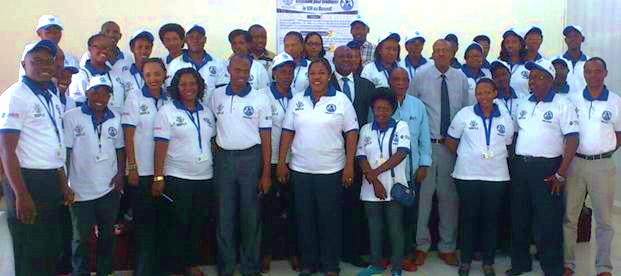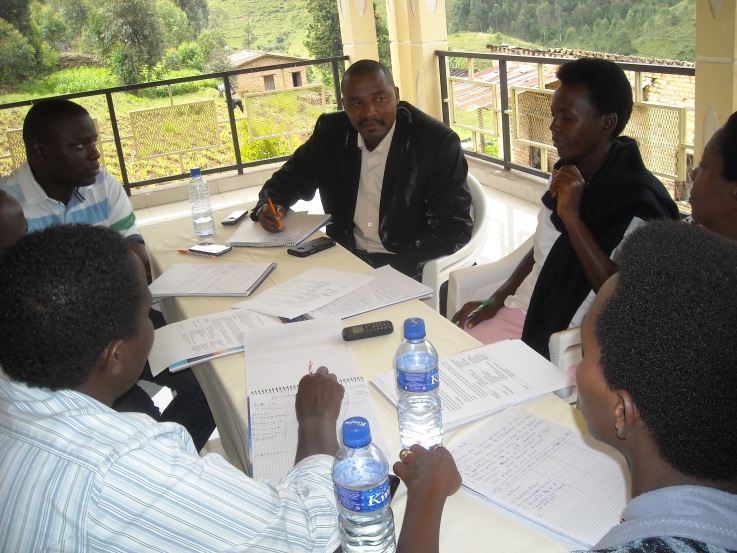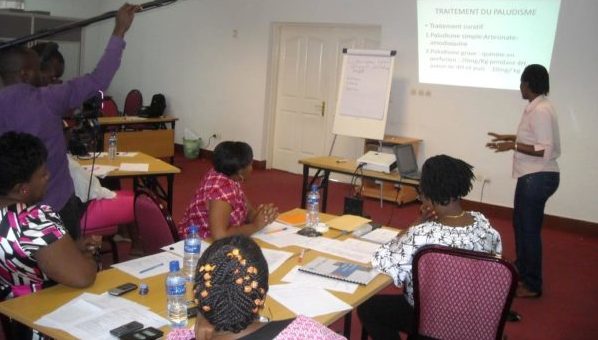Strengthening the Organizational Capacity of Burundi’s National HIV and AIDS Program
Categories: Announcements, HIV/AIDS, Where We Work
Burundi’s National HIV/AIDS Program (PNLS) was created in 2011 to lead the long-term implementation of the Burundian Ministry of Health’s HIV and AIDS programs. Soon after its inception, it was clear that the National HIV/AIDS Program (Programme de Lutte Contra la SIDA or PNLS) lacked strong management and organizational capacity, resulting in weaker HIV and AIDS program outcomes.
Weak PNLS organizational capacity meant that strategies were not being operationalized, programs and plans were not being implemented well, stakeholder coordination was poor, provinces were not able to effectively plan and manage their activities, and resources were not adequately mobilized. All of this contributed to weaker HIV and AIDS outcomes. Burundi’s National Health Development Plan 2011-2015 and the 2012 PEPFAR Country Operational Plan both called attention to the importance of strengthening national-level capacity to carry out core functions in order to achieve better outcomes from HIV and AIDS programs.
Building the Capacity of the PNLS

PNLS staff
In 2013, USAID/Burundi and the USAID Health Finance and Governance (HFG) project began work to build the organizational capacity of the PNLS. For a three-year period, HFG worked closely with PNLS staff to develop their organizational capacity, so the organization could fulfill its core functions of planning, implementing, and monitoring HIV and AIDS activities in Burundi—ultimately allowing for greater access to services, and improved health outcomes.
The PNLS is comprised of 38 staff assigned to five divisions – Preventing Mother-to-Child Transmission (PMTCT), Care and Treatment, Monitoring and Evaluation, Community Mobilization, and Management.
Based on the premise that organizations must have organizational and management capacity as well as technical capacity to be effective, HFG took a comprehensive approach to the organizational capacity building. Such an approach is aimed at strengthening foundational management capacity—like the capacity to develop strategies and plans, clarify its role and functions, implement its activities, mobilize the resources for basic operating costs, and exercise effective internal leadership and management.
The first step was to conduct an organizational assessment which consisted of a web-based survey; interviews with the director, deputy director, and the five division chiefs; division focus groups; and interviews with six technical and financial partners that regularly interact with the PNLS. The assessment covered six dimensions, such as whether PNLS has a clear mandate and well defined functions, the leadership and management capacity needed, and adequate operating resources to function effectively. Based on the findings from the assessment, HFG developed a three-year capacity building framework which was implemented in three phases.
A Noticeably Stronger Organization

Members of PNLS discuss the priorities to be included in their first Operational Plan.
Outcomes of HFG’s technical assistance to the PNLS included the development of an Organizational Vision and a 2015-2016 Operational Plan (previously the organization had no vision, strategy, or operational plan); establishment of a coordination mechanism for partners (the PNLS was not previously coordinating implementing partner activities); development and implementation of a supervision strategy; clarification of individual roles and responsibilities; and improvement of basic working conditions e.g. IT equipment, renovation of meeting room, provision of office furniture.
To achieve these outcomes, HFG used a range of organizational capacity building techniques including training, participatory workshops, organizational retreats, individual coaching, task forces, and regular follow-up. HFG’s efforts have resulted in a high level of buy-in to the capacity-building process coupled with the organization’s willingness and ability to improve.
HFG conducted an end line evaluation of the capacity-building work, using the same methodology and data collection instruments used at the beginning in 2013. The evaluation data confirm the strong progress that PNLS has made in assuming its leadership role in HIV and AIDS in Burundi. PNLS staff and external stakeholders have noticed the difference:
“The program now has a vision and understands its role in the response to HIV.”
“Now with the HFG project and new leadership, the staff is motivated. They act like leaders.”
“They organize the district management teams better and the supervision missions are more and more productive.”

PNLS staff present their first operational plan to stakeholders.
“PNLS is now among the best organized programs in the Ministry of Health, with leadership and staff motivated to address the challenges and which collaborates effectively with its partners.”
“The HFG project made it possible for PNLS to work differently.”
The results are especially noticeable in the core functions that PNLS is responsible for. PNLS is now better positioned as a leader in the fight against HIV and AIDS.



